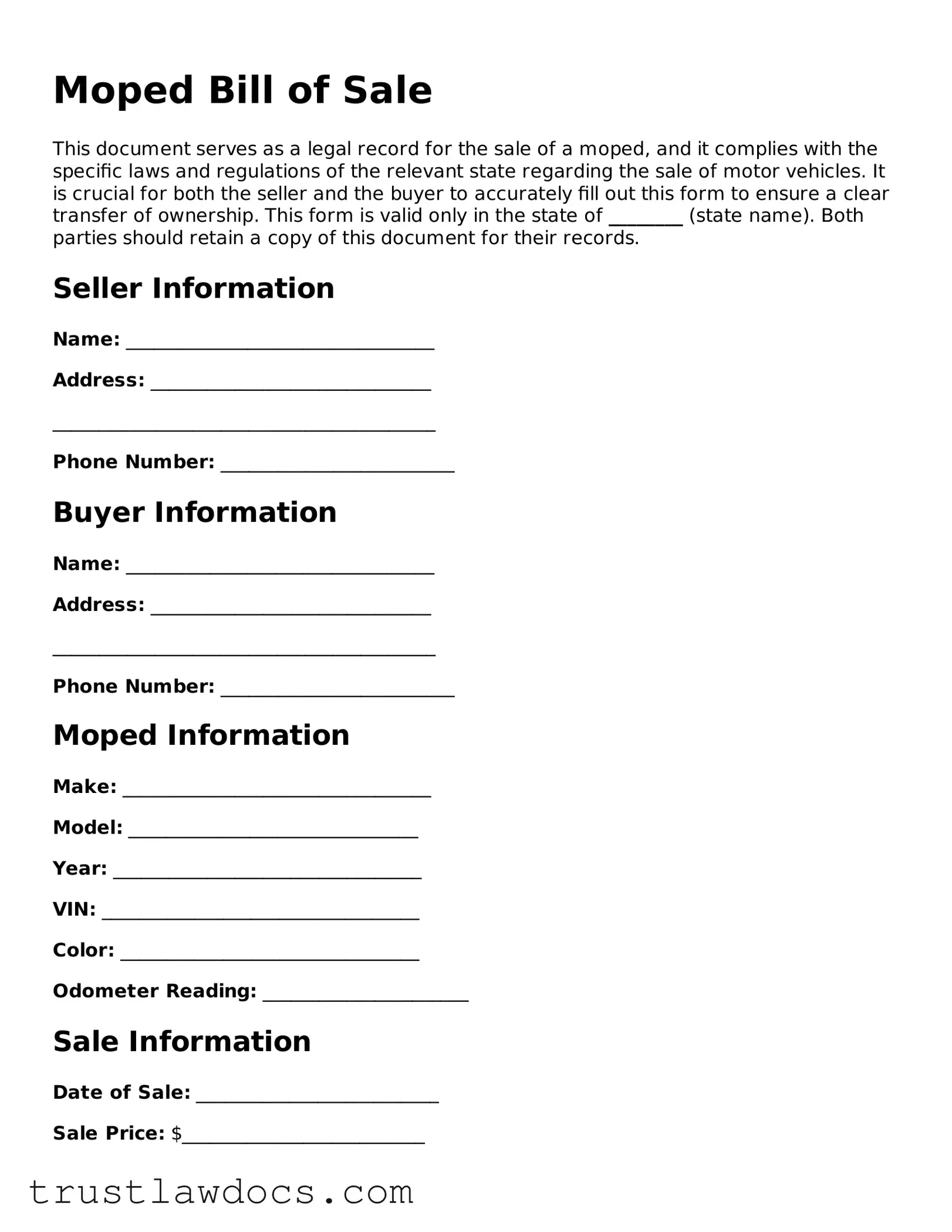Moped Bill of Sale
This document serves as a legal record for the sale of a moped, and it complies with the specific laws and regulations of the relevant state regarding the sale of motor vehicles. It is crucial for both the seller and the buyer to accurately fill out this form to ensure a clear transfer of ownership. This form is valid only in the state of ________ (state name). Both parties should retain a copy of this document for their records.
Seller Information
Name: _________________________________
Address: ______________________________
_________________________________________
Phone Number: _________________________
Buyer Information
Name: _________________________________
Address: ______________________________
_________________________________________
Phone Number: _________________________
Moped Information
Make: _________________________________
Model: _______________________________
Year: _________________________________
VIN: __________________________________
Color: ________________________________
Odometer Reading: ______________________
Sale Information
Date of Sale: __________________________
Sale Price: $__________________________
Terms and Conditions
The buyer acknowledges receipt of this bill of sale and understands that the above-described moped is sold as is, with no warranties or guarantees, unless otherwise stated here:
__________________________________________________________
__________________________________________________________
Signatures
Both the buyer and seller agree that all the information provided in this bill of sale is accurate to the best of their knowledge. The signing of this document acknowledges the transfer of ownership of the moped detailed above from the seller to the buyer.
Seller's Signature: __________________________ Date: ___________
Buyer's Signature: ___________________________ Date: ___________
Witness (If Applicable)
Name: _________________________________
Signature: ____________________________ Date: ___________
Notary Acknowledgement
(If required by the state of ________)
This document was acknowledged before me on ______ (date) by ________________ (name of individual(s)) known to me or satisfactorily proven to be the person(s) whose name(s) is/are subscribed to the within instrument.
Notary Public Signature: ________________________ Date: ___________
Seal: __________________________________________
